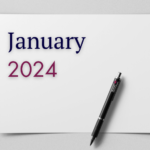The U.S. auto market has experienced a strong resurgence since the Great Recession. The seasonally adjusted annual rate (SAAR) of U.S. auto sales has gone from around 9 million units in the depths of 2009, to above 18 million units in December 2016. However, this strong growth in auto sales in recent years has coincided with a rapid increase in auto credit, and evidence suggesting that financing terms have grown increasingly accommodative to drive further auto sales. There are now cracks starting to appear, as auto lenders cite headwinds and a reversal of the previously sanguine market conditions.
As can be seen from the below chart, the US auto sales SAAR has grown impressively since 2009:
Source: ZeroHedge
At the same time, auto credit has surged, with average debt per auto borrower also increasing to more than $18k in 2016, up from ~$15k in 2010.
Within this increase in auto debt has been a rise in the number of used car sales made with trade-ins, where the trade-ins had negative equity at the moment of the transaction. The Edmund’s Q3 2016 Used Vehicle Market Report revealed that an astonishing 25% of used sales were made with a trade-in that had negative equity, a number that has been on the rise in recent years.
Source: Edmund’s Q3 2016 Used Vehicle Market Report
For example, a consumer with an outstanding loan balance of $18k on a vehicle valued at $15k has $3k of negative equity. The above data implies that an increasing portion of car purchasers are rolling their negative equity from trade-in vehicles into new car loans. Lenders may be willing to accept trade-ins with negative equity, and add the negative equity to the new loan balance, for a number of reasons, one of which is to incentivize a new car sale. Conditions for this sort of behavior have been forgiving, with used car prices rising at a c.3% CAGR since 2010.

Source: Edmund’s Q3 2016 Used Vehicle Market Report
Rising used car values can go a long way in masking the sins of auto lenders who finance vehicles purchased by overextended borrowers. For example, it may be the case that some borrowers have 15-20% of their outstanding loan balances representing the negative equity of their prior vehicle, but if used car prices continue to grow at around 3% p.a., then it will take 5-6 years to eliminate that negative equity component of the loan. This is okay so long as delinquencies remain muted and used car prices continue to rise. In fact, the opposite has started to occur, with an uptick in delinquencies and used car prices falling in recent months.
In November 2016, the Federal Reserve Bank of New York noted their concerns over rising subprime delinquencies. In the third quarter of 2016, 2% of subprime auto loan balances became at least 90 days delinquent, an increase from the 1.6% in the third quarter of 2014.
This has been accompanied by falling used car prices. February 2017 used car prices dropped -3.8% from January, which according to the National Association of Auto Dealers (NADA) was “by far the worst recorded for any month since November 2008 as the result of a recession-related 5.6% tumble.”
One reason NADA cited for the drop was a surge in new vehicle incentive spending, which was up 18% in February, making it the 23rd month in a row where incentive spending was increased. Automakers have been increasing their incentive spending in order to move unsold car inventory off their dealer lots, and the February incentive spending represented the highest level in over a decade.
There has also been a wave of used vehicles going through auction in the wholesale market, with a flood of vehicles coming off lease over the next few years. Late-model auction sales volume, referring to vehicles less than three years old, was up 6% sequentially in February 2016, contributing to the used car price decline.
Used car prices are particularly important for lenders, given that they affect the value of collateral for auto loans. A diminution of used car values is likely to result in loan losses and a tightening of lending standards. As lenders become less-willing to extend credit to auto purchasers, this impacts demand for cars and has a deflationary impact on prices. This in turn puts further pressure on the auto loan books of lenders.
Ally Financial (NYSE: ALLY) is just one auto lender that’s beginning to feel the pinch. It recently downgraded its FY17 EPS growth guidance from 15% to a range of 5-15%, citing rising credit losses, declining used vehicle prices, and increasing manufacturer incentive levels, among other factors. The Montaka team is continuing to analyze this space for opportunities.
![]() George Hadjia is a Research Analyst with Montgomery Global Investment Management.
George Hadjia is a Research Analyst with Montgomery Global Investment Management.
To learn more about Montaka, please call +612 7202 0100.










